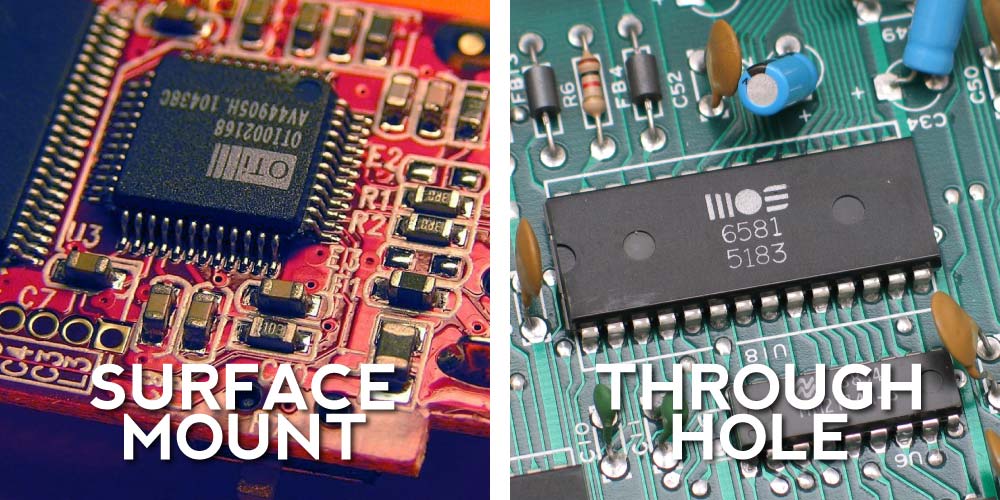In the realm of electronics manufacturing, two primary methods dominate the landscape: Surface Mount Technology (SMT) and Through Hole Technology (THT). Understanding the nuances between these two approaches is crucial for Original Equipment Manufacturers (OEMs) aiming to optimize their production processes. This article delves into the key differences, benefits, and applications of both technologies, providing a comprehensive guide to help you make an informed decision.
Table of Contents
- Overview of Surface Mount Technology (SMT)
- Overview of Through Hole Technology (THT)
- Key Differences Between SMT and THT
- Mixed Tech Assemblies
- Advantages and Disadvantages of SMT
- Advantages and Disadvantages of THT
- Choosing the Right Technology for Your Needs
Overview of Surface Mount Technology (SMT)
Surface Mount Technology (SMT) revolutionized electronics manufacturing by allowing components to be mounted directly onto the surface of printed circuit boards (PCBs). This method enhances component density, reduces manufacturing costs, and improves performance.
Key Features of SMT
- Component Density: SMT allows for more components to be placed on both sides of the PCB, maximizing real estate.
- Smaller Components: Surface mount devices (SMDs) are generally smaller, which is ideal for compact and high-performance electronics.
- Automated Assembly: SMT assembly is highly automated, utilizing reflow ovens and pick-and-place machines.
Overview of Through Hole Technology (THT)
Through Hole Technology (THT), also known as Plated Through Hole (PTH) technology, involves inserting component leads through holes drilled into the PCB and soldering them in place. This traditional method is known for its robustness and reliability, particularly in applications requiring strong mechanical bonds.
Key Features of THT
- Mechanical Strength: THT components are highly durable and can withstand environmental stress, making them suitable for heavy-duty applications.
- Ease of Manual Assembly: Ideal for prototyping and low-volume production where manual soldering is feasible.
- Component Types: THT supports a wide range of component types, including large and high-power devices.
Key Differences Between SMT and THT
Assembly Process
- SMT: Components are placed on the PCB surface and soldered using reflow soldering techniques. The process is highly automated and efficient.
- THT: Components are inserted through pre-drilled holes and soldered on the opposite side of the board. This process can be automated or done manually, depending on production volume.
Reliability and Durability
- SMT: While SMT components are reliable for most applications, they may not offer the same mechanical strength as THT components. Solder joints in SMT can be more susceptible to mechanical stress and thermal cycling.
- THT: Known for superior mechanical bonding, THT components are preferred in applications where durability and resistance to physical stress are critical.
Cost Considerations
- SMT: Generally more cost-effective for high-volume production due to automation and the smaller size of components. However, the initial setup cost for SMT can be higher.
- THT: May have higher costs for high-volume production due to the manual labor involved, but can be more cost-effective for small-scale or prototype runs.
Application Suitability
- SMT: Best suited for high-density, high-performance, and compact electronic devices. Common in consumer electronics, telecommunications, and automotive industries.
- THT: Ideal for applications requiring strong mechanical bonds, such as industrial machinery, aerospace, and military equipment.
Mixed Tech Assemblies
A third option to SMT and THT assemblies is the “Mixed Tech” approach, where both SMT and THT components coexist on the same board. This hybrid method leverages the strengths of both technologies to optimize the overall performance and reliability of the electronic device.
An example of when to use Mixed Tech is in scenarios where SMT is predominantly used, but certain parts are better suited for a THT package. These often include large power components or connectors that will have something plugged and unplugged frequently, requiring the robust mechanical strength provided by THT.
Advantages and Disadvantages of SMT
Advantages
- High Component Density: Enables the design of compact and lightweight electronic devices.
- Automated Process: Reduces labor costs and increases production speed.
- Improved Electrical Performance: Shorter signal paths and reduced parasitic capacitance enhance performance.
Disadvantages
- Mechanical Weakness: Solder joints are less robust compared to THT.
- Difficult for Prototyping: SMT components can be challenging to handle manually during the prototyping phase.
Advantages and Disadvantages of THT
Advantages
- Strong Mechanical Bonds: Ideal for components subjected to mechanical stress.
- Easier for Prototyping: Components are easier to handle and solder manually.
- Versatility: Supports a wide range of component types and sizes.
Disadvantages
- Lower Component Density: Takes up more space on the PCB, limiting the design of compact devices.
- Higher Production Costs: Manual assembly and longer production times increase costs for high-volume manufacturing.
Choosing the Right Technology for Your Needs
Selecting between SMT and THT depends on various factors, including the application requirements, production volume, and cost constraints. OEMs must evaluate the specific needs of their projects to determine the most suitable technology.
- High-Density Applications: SMT is preferable for devices requiring high component density and performance.
- Heavy-Duty Applications: THT is ideal for applications needing strong mechanical bonds and durability.
- Prototyping and Low-Volume Production: THT may be more practical for manual assembly and small-scale production runs.
Conclusion
The choice between Surface Mount Technology and Through Hole Technology is pivotal in electronics manufacturing. Each method offers distinct advantages and is suited for different applications. By understanding the key differences and evaluating your specific needs, you can optimize your manufacturing process and achieve superior results.





